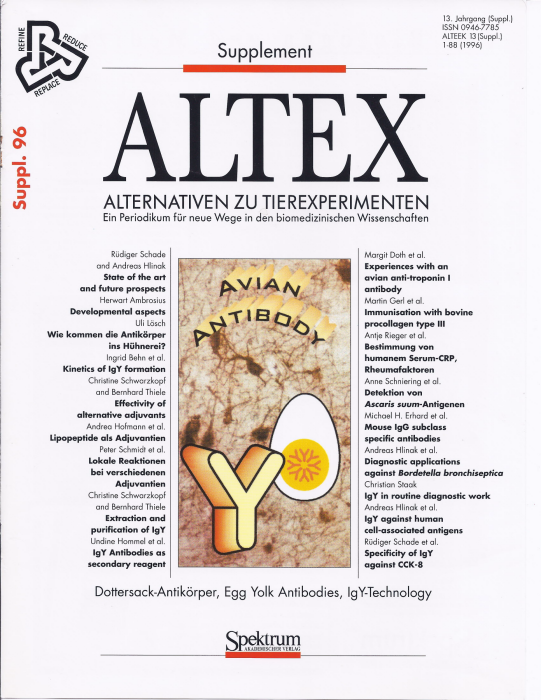Specificity of chicken (IgY) versus rabbit (IgG) antibodies raised against cholecystokinin octapeptide (CCK-8)
Main Article Content
Abstract
Antibodies produced in chicken (egg yolk antibody-IgY) and rabbits against CCK-8 TyrSE (a C-Terminal extended CCK-version) were compared with respect to their specificity against several modified CCK-sequences by means for radioimmunoassay and spot blot assay. The content of neuronal CCK was determined by using both an "avian" and a "mammalian" RIA. The IC50 values obtained indicate differences between the binding capacity of rabbit and chicken antibody, respectively. Supported by the data from spot blot assay, it appears that the avian antibody binding activity was directed primarily towards short CCK-sequences whereas the longer sequences are less well recognised in contrast to the mammalian antibody. Probably, these differences may be due to characteristics regarding the shape of the molecules (caused also by fixation processes necessary for blotting procedures) as well as to structural differences between avian and mammalian antibodies itself (both antibodies originate from quite different immune systems). By comparing the quantitative CCK data (avian versus mammalian RIA) as significant correlation could be observed. Immunohistochemical studies using avian antibodies revealed a neuronal CCK pattern different from those using rabbit antibodies. These results are discussed on the basis of the specificity studies.
Article Details

This work is licensed under a Creative Commons Attribution 4.0 International License.
Articles are distributed under the terms of the Creative Commons Attribution 4.0 International license (http://creativecommons.org/licenses/by/4.0/), which permits unrestricted use, distribution and reproduction in any medium, provided the original work is appropriately cited (CC-BY). Copyright on any article in ALTEX is retained by the author(s).


